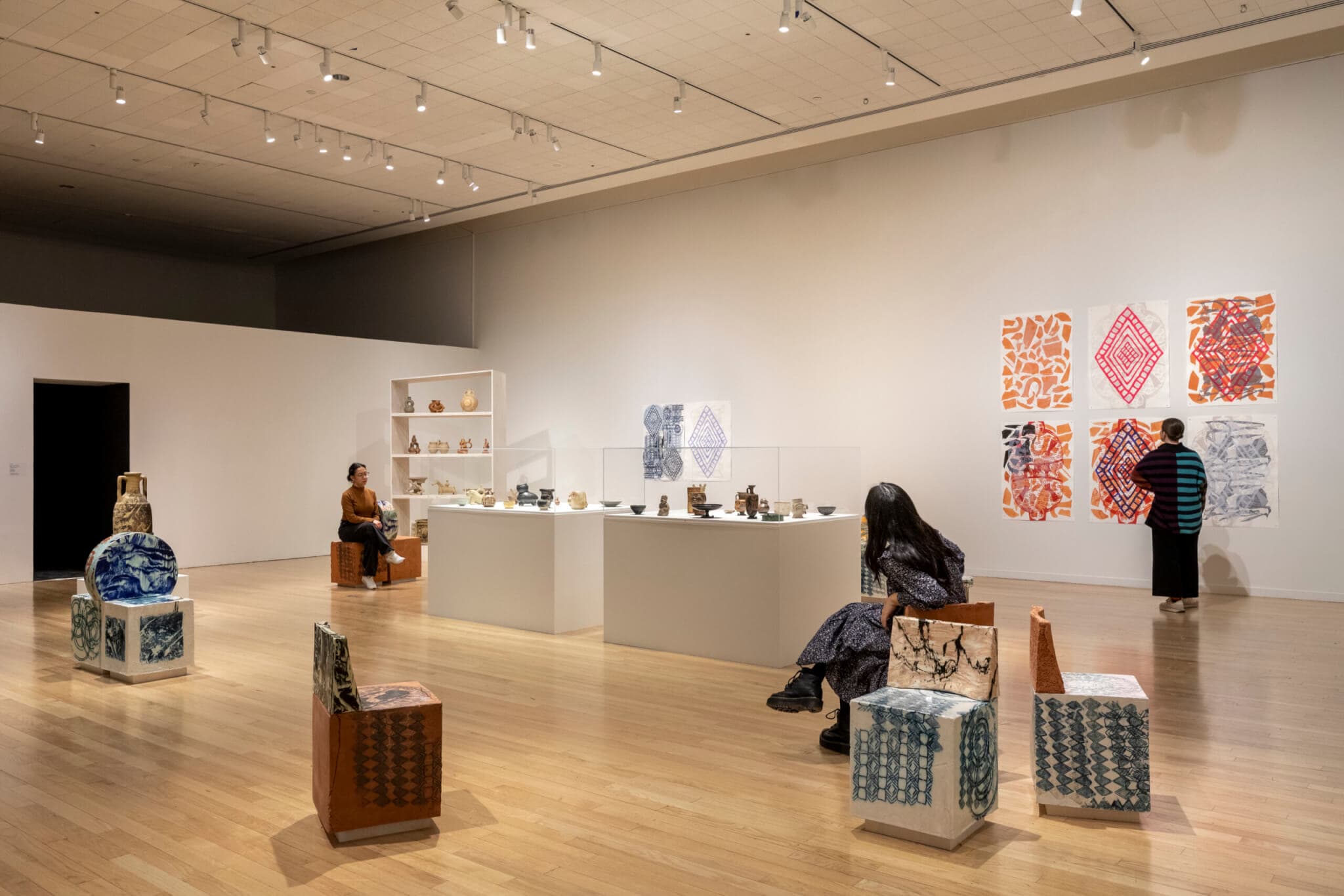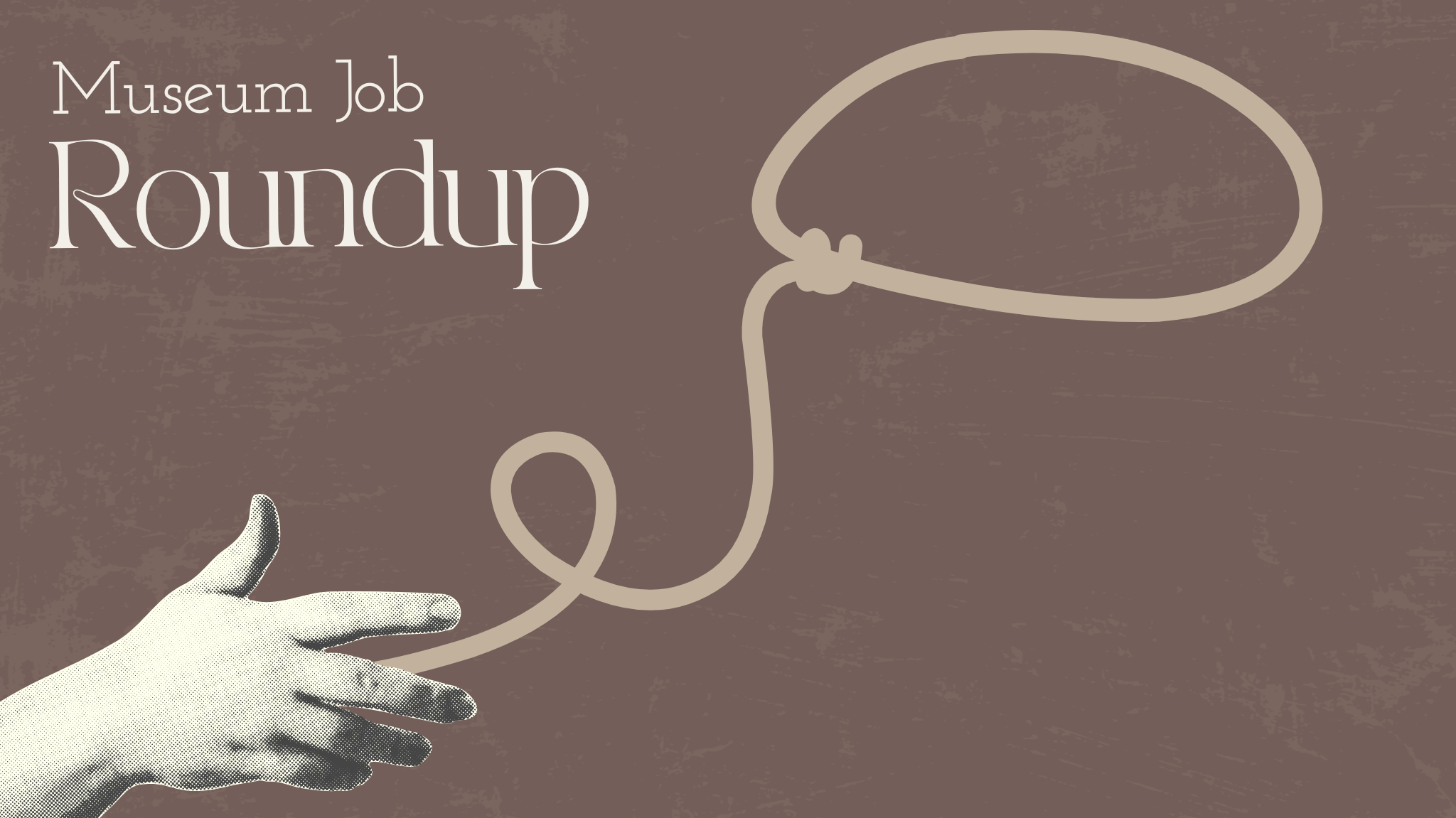Welcome to the Museum Studies Job Roundup! We do our best to collect the latest job openings and welcome submissions from the community. For more opportunities, we recommend the following databases:
SUITED TO STUDENTS
Below is a list of jobs that we specifically feel are suited to students in the Tufts Museum Studies program and greater Boston community. Whether you are looking for full or part time jobs, check out this section for job listings that are great entry points into the field and can be balanced alongside an academic schedule.
INTERNSHIPS AND FELLOWSHIPS
NEW ENGLAND
Connecticut, Rhode Island, Massachusetts, Vermont, New Hampshire, Maine
- Framingham History Center (Framingham, MA): Operations Director
- Institute of Contemporary Art (Boston, MA): Corporate Relations Officer
- Isabella Stewart Gardner Museum (Boston, MA): Staff Accountant
- Peabody Museum of Archaeology and Ethnology (Cambridge, MA): NAGPRA Coordinator
- Gibson House Museum (Boston, MA): Museum Director
- Scottish Rite Masonic Museum & Library (Lexington, MA): Collections Manager
- Historic Newton (Newton, MA): Community Engagement Manager
- Peabody Essex Museum (Salem, MA): Assistant Cataloging Librarian
- Peabody Essex Museum (Salem, MA): Accounts Payable Administrator
- Concord Museum (Concord, MA): Public Programs Coordinator
- Worcester Art Museum (Worcester, MA): Shop Sales Clerk (Temporary)
- American Ancestors (Boston, MA): Member Services Associate
- American Ancestors (Boston, MA): Assistant Archivist
- MASS MoCA (North Adams, MA): Retail Sales Associate, R&D Store (Part-Time)
- Fine Arts Work Center (Provincetown, MA): Education Program Manager
- New England Aquarium (Boston, MA): Grants & Contracts Manager
- Fitchburg Art Museum (Fitchburg, MA): Director of Development
MID-ATLANTIC
Delaware, Washington D.C., Maryland, New Jersey, New York, Pennsylvania
SOUTHEAST
Alabama, Arkansas, Florida, Georgia, Kentucky, Louisiana, Mississippi, North Carolina, South Carolina, Tennessee, Virginia, West Virginia, Puerto Rico, US Virgin Islands
MIDWEST
Illinois, Indiana, Iowa, Michigan, Minnesota, Missouri, Ohio, Wisconsin
MOUNTAIN PLAINS
Montana, Wyoming, Colorado, New Mexico, North Dakota, South Dakota, Nebraska, Kansas, Oklahoma, Texas
WEST
Washington, Oregon, Idaho, California, Nevada, Utah, Arizona, Alaska, Hawaii
- Paul Getty Trust (Los Angeles, CA): Associate Interpretation Specialist
- Paul Getty Trust (Los Angeles, CA): Public Programs Specialist, Family and Artist-Based Programs
- Getty (Los Angeles, CA): Museum Store Associate, Getty Center (PT)
- Denver Art Museum (Denver, CO): Assistant or Associate Curator of Native Arts
- Coos Art Museum (Coos Bay, OR): Education Manager
- High Desert Museum (Bend, OR): Donald M. Kerr Curator of Natural History
- High Desert Museum (Bend, OR): Bonnie Lee and Oliver P. Steele III Curator of Education & Engagement
- Museum of Natural & Cultural History (Eugene, OR): Collections Manager
- Boise Art Museum (Boise, ID): Development Associate
- Boise Art Museum (Boise, ID): Curator of Education
- Riverside Art Museum (Riverside, CA): Curator





